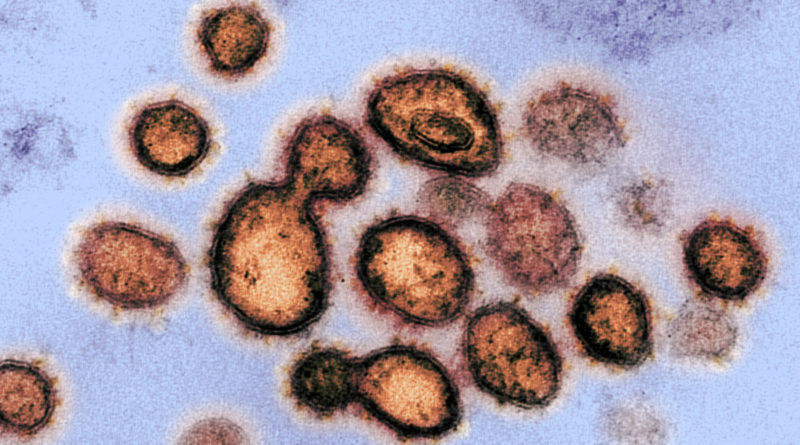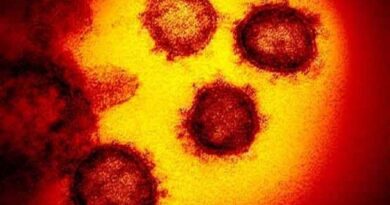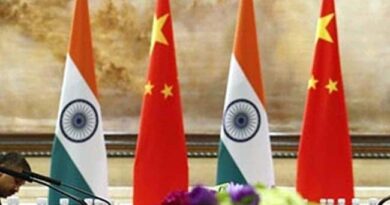COVID -19 Linguistic Impacts: Coinage of Words By Birbal Jha
New Delhi: 1st May, 2020
The ‘Covid-19’ is one of the newly coined words that have come into fashion. Since December 2019 there’s hardly been any day when this word does not pop up when watching TV or reading news or reports on health.
Let’s have a look at how such words are coined and further they gain currency in our communications, becoming a part of a dictionary for a reference. The acronym Covid-19 is made of corona+ virus+ disease + 2019. The derivative is written in both ways – all capital or small letters with its entry in almost all leading online dictionaries whether Oxford, Collins, Cambridge or others.
Covid-19 is a sort of illness caused by a virus that looks like a corona meaning a crown. Hence, the image of this tiny virus is represented by the shape of a crown. The coronavirus is said to be a respiratory illness characterized by fever, cough and shortness of breath. It affects the victim’s lungs to the extent of death. However, the mortality rate is low and the recovery rate is high. On the contrary, the patients with comorbidity (multiple diseases and conditions) are at a higher risk.
Social distancing is yet another coinage doing the rounds given that the novel coronavirus has no sure cure. Social distancing is, however, synonymous with physical distancing. Hence, they are interchangeably used. Nevertheless, social distancing is for keeping oneself away from all social gatherings and contacts in person whereas physical distancing is to avoid a physical contact with any individual.
The Covid-19 is not only infectious but highly contagious. It spreads quickly from human to human through droplets such as when a person with the virus sneezes he or she infects the near surrounding with the disease. One can infect many others in series. Nobody is too immunized to remain unaffected with this microorganism.
No handshake for healthsake is advisable in the current situation of infectivity. The term healthsake was coined by this author Dr Birbal Jha, who had launched the Namaste March from New Delhi early this year intending to disseminate the message of how the Indian way of greeting is preventive to the pandemic coronavirus originating from Wuhan, China. However, how it originated is a moot point. There are two theories, one is that it is a biological weapon created in the testing lab of China; another is that it germinated from the bat soup in that country. Let’s not jump to the conclusion until research on the subject is made public.
The Namaste culture is now global with representatives of different countries being seen putting their palms together and placing before their hearts instead of extending their hands to shake with others. Time has drawn the attention of people across the world towards the efficacy of Indian greetings and lifestyles in the wake of contamination. Greeting with namaste is so easy, says Donald Trump, US President. Shake off the Western greetings like hugging or kissing at least for now. Life is better than gold.
Mind you! Social distancing should not be misconstrued as a rejection of social interactions between individuals or different social groups. Rather, it is a tool to keep the virus at bay. God forbid! Mental distancing would be a catastrophe. We need to stay home and well connected with our loved ones.
An outbreak is a sudden rise in the incidence of a disease (dis+ ease) whereas an epidemic is an outbreak of infection that spreads quickly in a particular area. An epidemic turns into a pandemic when it affects masses all over. The prefix ‘pan’ means all such as pan India.
So who is a super spreader?
A patient who infects many others falling in his/her chain of contacts as witnessed in the state of Punjab. The contagious disease may take the shape of a community spread once it outbursts in a particular neighbourhood.
For both preventive and remedial approaches, contact tracing is required to put the contacts of the infected person in quarantine or isolation for some time, preferably 14 days. There is a bit difference in these two words- quarantine applies to those who have history of travel whereas isolation for those who merely came into contact. However, functionality is the same.
Many people choose self-isolation once contact tracing is done. Self-quarantine is a good preventive step to contain the spread. However, restricting the people to stay home and disallowing them access to many facilities and movement from their houses is a lockdown which the country has been placed on in the interest of masses.
Maintaining social distancing is the only way that can flatten the curve of rising cases of the novel Covid-19 all across the world. To flatten the curve is to slow down the spiking graph of people coming down with the unprecedented malady that has wreaked havoc.
If you do not follow the government advisories (official announcement and warnings) and orders during the period of the current pandemic, you will be called a covidiot. The meaning is self-explanatory as is a combination of the two words -Covid-19 + idiot.
A PPE Kit that stands for Personal Protective Equipment (surgical face mask, eyewear, gloves, head-cover, shoe-cover and coverall, either disposable or autoclavable) is a word limited to the medical fraternity prior to the Covid-19. Such a medical jargon is now in common parlance. An N95 Mask which is a respiratory protective device designed to achieve a very close facial fit and very efficient filtration of airborne particles is in short supply everywhere.
A containment zone is an area identified as a Covid-19 hotspot, which with a colour representation has been classified as a red zone. Orange and green zones are the two other specific areas with no fresh cases and no cases at all respectively.
Using a sanitizer (a liquid or gel to prevent an infection) has become a part of life. In most social settings, frequent hand washing with soap and water is encouraged as a preventive measure. Sneezing, spitting, burping or farting is a natural bodily discharge. However, each of them has got its own protocol to strictly follow. Spitting at public places is a punishable offence. Thus, such words gain currency and frequency of their use.




